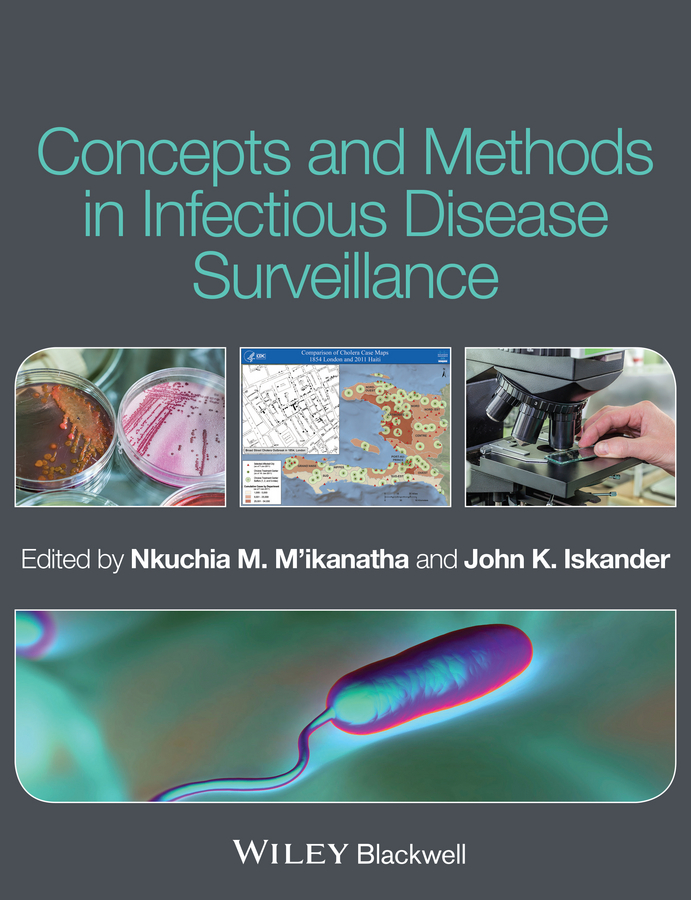Электронная книга: John Iskander «Concepts and Methods in Infectious Disease Surveillance»

|
Infectious disease surveillance has evolved at an extraordinary pace during the past several decades, and continues to do so. It is increasingly used to inform public health practice in addition to its use as a tool for early detection of epidemics. It is therefore crucial that students of public health and epidemiology have a sound understanding of the concepts and principles that underpin modern surveillance of infectious disease. Written by leaders in the field, who have vast hands-on experience in conducting surveillance and teaching applied public health, Concepts and Methods in Infectious Disease Surveillance is comprised of four sections. The first section provides an overview, a description of systems used by public health jurisdictions in the United States and legal considerations for surveillance. The second section presents chapters on major program-area or disease-specific surveillance systems, including those that monitor bacterial infections, foodborne diseases, healthcare-associated infections, and HIV/AIDS. The following section is devoted to methods for conducting surveillance and also approaches for data analysis. A concluding section summarizes communication of surveillance findings, including the use of traditional and social media, in addition to showcasing lessons learned from the New York City Department of Health’s experience in surveillance and epidemiology training. This comprehensive new book covers major topics at an introductory to intermediate level, and will be an excellent resource for instructors. Suitable for use in graduate level courses in public health, human and veterinary medicine, and in undergraduate programs in public-health-oriented disciplines, Concepts and Methods in Infectious Disease Surveillance is also a useful primer for frontline public health practitioners, hospital epidemiologists, infection control practitioners, laboratorians in public health settings, infectious disease researchers, and medical and public health informaticians interested in a concise overview of infectious disease surveillance. Издательство: "John Wiley&Sons Limited"
ISBN: 9781118928622 электронная книга Купить за 7409.57 руб и скачать на Litres |
Другие книги схожей тематики:
| Автор | Книга | Описание | Год | Цена | Тип книги |
|---|
См. также в других словарях:
genetic disease, human — Introduction any of the diseases and disorders that are caused by mutations in one or more genes (gene). With the increasing ability to control infectious and nutritional diseases in developed countries, there has come the realization … Universalium
Clinical surveillance — (or Syndromic surveillance) refers to the surveillance of health data about a clinical syndrome that has a significant impact on public health, which is then used to drive decisions about health policy and health education. This is distinct from… … Wikipedia
Nobel Prizes — ▪ 2009 Introduction Prize for Peace The 2008 Nobel Prize for Peace was awarded to Martti Ahtisaari, former president (1994–2000) of Finland, for his work over more than 30 years in settling international disputes, many involving ethnic,… … Universalium
Epidemiology — For the Community episode, see Epidemiology (Community). Epidemiology is the study of health event, health characteristic, or health determinant patterns in a population. It is the cornerstone method of public health research, and helps inform… … Wikipedia
Foreign internal defense — (FID) is used by a number of Western militaries, explicitly by the United States but sharing ideas with countries including France and the United Kingdom, to describe an approach to combating actual or threatened insurgency in a foreign state… … Wikipedia
Biological warfare — For the use of biological agents by terrorists, see bioterrorism. Weapons of mass destruction … Wikipedia
